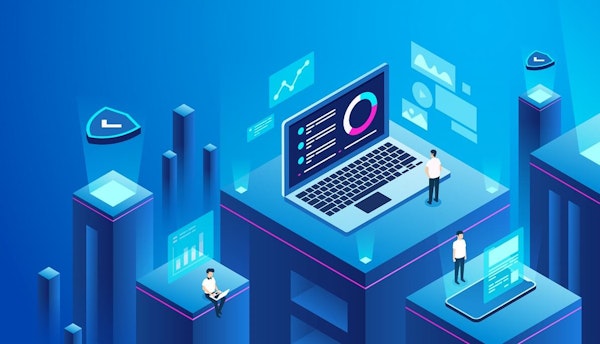Beginner's Guide To Internet of Things (IoT)
What is the Internet of Things (IoT)?
The Internet of Things (IoT) refers to the network of physical devices, vehicles, home appliances and other items embedded with electronics, software, sensors, and connectivity that enables these objects to collect and exchange data.
The IoT allows objects to be controlled remotely across existing network infrastructure, creating opportunities for more direct integration between the physical world and computer-based systems, and resulting in improved efficiency and accuracy. A key enabler of the IoT is the increasing availability of low cost computing power, storage and networking components.
This has allowed for the development of small, low-power devices that can be easily connected to a network wirelessly. In addition, advances in communication technologies such as Bluetooth Low Energy (BLE) and 5G have made it possible to transmit data over long distances with very little power consumption.
The IoT is already having a transformative impact on many industries including healthcare, transportation, manufacturing and agriculture. For example, hospitals are using IoT devices to monitor patients remotely; farmers are using sensors to track soil moisture levels; factories are using connected machines to improve production efficiency; and cities are using smart streetlights to reduce energy consumption.
Application Of The Internet Of Things
1. Smart office and home
Smart home applications utilizing intelligent sensors are becoming increasingly popular. Any smart device may be set up, connected to the internet, and controlled using a simple smartphone app.
2. Traffic management
Analyzing traffic over time provides insight into potential trends and patterns during peak hours. It will assist travelers in learning about alternate routes to avoid traffic and delays.
3. Wearable
Wearable technology can be utilized for more than these purposes, thanks to the Internet of Things. Major innovative wearable device makers are working on specific operating systems and applications for these devices.
4. Self-driving cars
With artificial intelligence and intelligent sensor technology in the Internet of Things, autonomous driving has progressed. The first generation of autonomous vehicles (partial automation) will aid drivers with driving safely, avoiding collisions, and warning about road and vehicle conditions.
5. Smart irrigation - smart farming
Smart irrigation is an Internet of Things-based technology for optimal water use in agriculture. Smart sensors are embedded in the soil and continuously monitor and transmit data on soil conditions to a control center.
6. Web applications
IoT can be used in developing web applications to provide data that can be used to improve the user experience. For example, data from weather sensors can be used to provide real-time information about conditions at a given location, which can be useful for things like choosing the best time to go for a walk or planning a trip.
IoT devices can also be used to collect data about how people use web applications. This information can be used to improve the design of the application and make it more user-friendly.
For example, if it is found that people are using a particular feature more often than expected, the design of that feature can be improved.
Finally, IoT devices can be used to monitor the performance of web applications and identify potential problems. This information can help developers locate and fix issues with their code so that users have a better experience with the application overall.
7. Blockchain applications
IoT devices can generate a vast amount of data that can be used to track and verify activity in blockchain applications. For example, sensors on shipping containers can be used to track the location and condition of the contents throughout the supply chain.
This data can then be used to verify the authenticity of the goods when they reach their destination.

